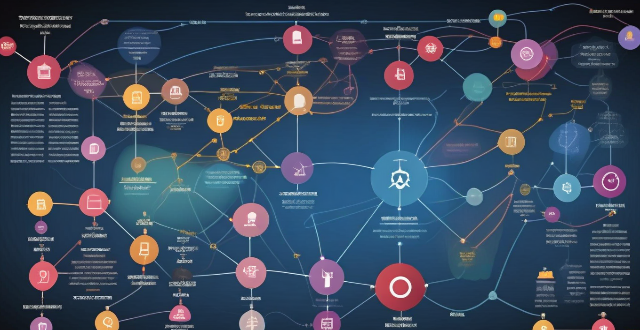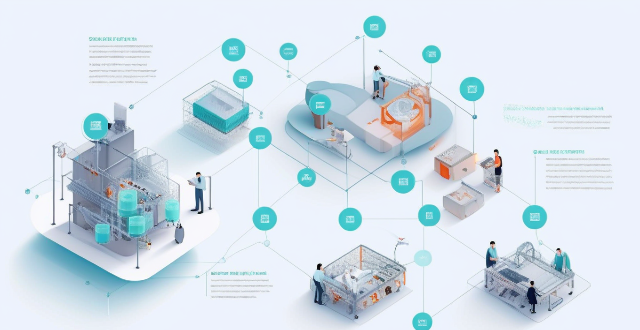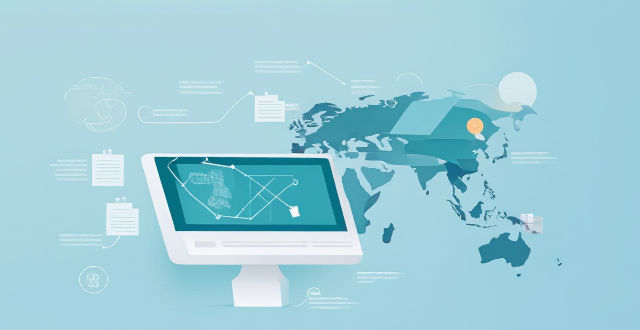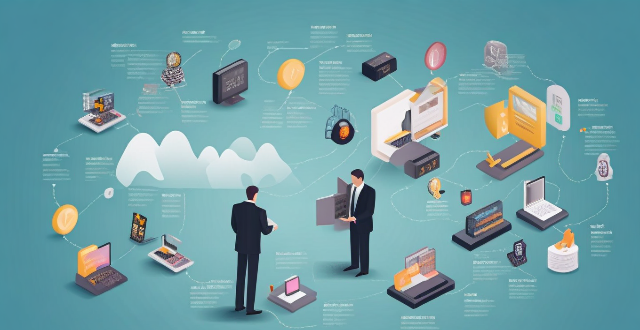Interference Spectrum

What role does frequency play in communication interference ?
The text discusses the role of frequency in communication interference, especially in wireless systems. It outlines types of interference (destructive and constructive), effects such as signal overlap, channel capacity issues, and Doppler shift. Mitigation techniques include frequency hopping, spread spectrum, channel coding, power control, and antenna diversity.

What is the role of frequency bands in wireless communication standards ?
In wireless communication, frequency bands dictate signal propagation, spectrum allocation, and interference management. These bands are critical for establishing reliable connections in technologies like Wi-Fi, Bluetooth, cellular networks, and satellite communications. The choice of band influences the range, data rate, and potential interference of a wireless system. Spectrum scarcity and regulatory compliance present challenges that drive innovations in spectrum sharing and cognitive radio technologies. Overall, the role of frequency bands is crucial for efficient and effective wireless communication standards.

How does altitude affect communication interference ?
This article discusses how altitude affects communication interference in wireless communication. It explains the various ways that altitude can impact signal strength, including signal attenuation, refraction and scattering, ionospheric effects, and multipath propagation. The article also provides tips for mitigating these effects, such as increasing transmitter power, using higher frequencies, implementing error correction techniques, using directional antennas, and choosing suitable locations for equipment. Overall, understanding altitude's impact on communication interference is crucial for ensuring effective communication in wireless systems.

What is the impact of communication interference on military operations ?
The text discusses the impact of communication interference on military operations. It highlights five main consequences: loss of situational awareness, delayed response times, compromised security, reduced coordination, and increased risk of misinterpretation. The author emphasizes the importance of secure and reliable communication systems for effective military strategy and suggests developing contingency plans to mitigate the risks associated with communication interference.

What is the impact of communication interference on emergency services ?
Communication interference can significantly impact emergency services by delaying response time, impairing coordination, increasing risk to responders and victims, disrupting technology, and negatively affecting public perception. It is crucial for emergency services to prioritize reliable communication systems and protocols to minimize the impact of interference and ensure effective responses to emergencies.

How does weather affect radio communication interference ?
The text discusses how weather conditions can impact radio communication interference. It lists various types of weather such as rainfall, fog, thunderstorms, snow, sunspots, wind, and humidity and explains how each type can affect radio signals. For example, raindrops can absorb and scatter radio waves, reducing the strength of the signal, while thunderstorms can produce static discharges that interfere with nearby frequencies. The text emphasizes the importance of considering these factors when planning and managing wireless communications networks.

Can buildings cause communication interference ?
Buildings can cause communication interference due to obstruction, reflection, and absorption of radio waves. This affects devices like cell phones, Wi-Fi routers, and radios. Strategies such as using external antennas and optimizing Wi-Fi placement can help reduce these effects.

What are the best practices for mobile network optimization ?
The article provides best practices for mobile network optimization, which are crucial for ensuring seamless connectivity and efficient data transfer. The practices include proper site selection, cell configuration, spectrum allocation, power control, antenna selection, frequency reuse, load balancing, congestion control, QoS, regular maintenance, fault detection and resolution, performance monitoring, authentication and authorization, encryption, and intrusion detection and prevention. By following these practices, mobile network operators can optimize their networks for better performance, reliability, and security, ultimately providing a better user experience for their customers.

How can we prevent communication interference during critical missions ?
To prevent communication interference during critical missions, organizations should use reliable communication systems, minimize environmental factors, train personnel adequately, test equipment beforehand, and use clear and concise language. These strategies can help ensure successful completion of missions by minimizing the risk of communication disruptions.

Can solar flares cause communication interference ?
Solar flares, intense bursts of radiation from the sun's atmosphere, can disrupt communication systems on Earth. This includes shortwave radio signals, satellite communications, and other terrestrial networks. The effects range from signal quality disruption and frequency deviation to satellite link disruptions, GPS accuracy issues, and even physical damage to satellite hardware. While these impacts vary, organizations involved in critical communication operations must be aware of the risks and implement mitigation strategies to minimize potential disruptions.

What are the common causes of communication interference ?
Communication interference can occur due to physical barriers like noise and technology issues, language differences, cultural norms, emotional factors, personal biases, misunderstandings, lack of active listening, and poor message construction. Being aware of these causes can help individuals improve their communication skills and minimize disruptions in various contexts.

How does Wi-Fi 6 perform in high interference environments ?
Wi-Fi 6, the latest wireless networking standard, offers several advantages over its predecessors in high interference environments. Key features include improved spectral efficiency, target wake time, BSS coloring, and spatial reuse. These features result in lower latency, increased throughput, better energy efficiency, and scalability. Wi-Fi 6 is well-suited for handling a large number of connected devices while maintaining low latency and high throughput, making it an ideal choice for high-density network environments like stadiums, airports, and apartment buildings.

How can we reduce communication interference in a crowded city ?
Reducing communication interference in crowded cities involves using clear language, minimizing background noise, being mindful of nonverbal cues, practicing active listening, and taking breaks when needed.

What are the pros and cons of wireless vs wired burglar alarm systems ?
This text compares the pros and cons of wireless and wired burglar alarm systems. Wireless systems are easier to install, portable, and expandable, but rely on batteries which need to be replaced regularly and can experience interference from other electronic devices. Wired systems are more reliable, do not experience interference, and have a longer range, but require professional installation, are not portable, and are less flexible when it comes to expanding or changing the layout of the system.

What kind of range can you expect from a Wi-Fi 6 router ?
Wi-Fi 6 routers offer faster speeds and better performance than previous standards. However, their range can be influenced by factors like physical obstacles, interference from other devices, router placement, channel selection, and device capabilities. With optimal conditions, a Wi-Fi 6 router can cover an area of about 1,500 square feet, but this varies based on the mentioned factors. To maximize its range, consider central placement, reducing interference, updating devices, and using quality hardware.

How do communication base stations affect the quality of phone calls and internet speeds ?
The article discusses the impact of communication base stations on phone call quality and internet speeds. It covers factors such as signal strength, coverage area, network congestion, spectrum availability, and technology used in base stations. The article explains how these factors affect voice and data services, and suggests solutions to address network congestion and improve performance.

Are there any potential drawbacks or challenges with implementing network slicing ?
Network slicing is a promising technology that allows multiple virtual networks to coexist on a shared physical infrastructure. It enables operators to provide tailored network services for different use cases, such as enhanced mobile broadband (eMBB), ultra-reliable low-latency communications (URLLC), and massive machine-type communications (mMTC). However, there are potential drawbacks and challenges associated with implementing network slicing, including the complexity of management and orchestration, significant infrastructure investment required, standardization and interoperability issues, skill gap within organizations, and regulatory and legal aspects to consider.

Are there specific channels or bands that Wi-Fi 6 uses to enhance performance ?
**Wi-Fi 6 Channels and Bands: Enhancements to Performance** Wi-Fi 6, also known as 802.11ax, is the latest wireless standard designed to improve network capacity and efficiency in high-traffic areas. One of its key features is the ability to utilize specific channels and bands to enhance performance. The 2.4 GHz band has limited channel capacity and potential for interference, making it less suitable for Wi-Fi 6's performance enhancements. The 5 GHz band, on the other hand, offers significantly more channels and is the primary focus for Wi-Fi 6's enhancements. Within the 5 GHz band, Wi-Fi 6 networks can choose from a variety of U-NII and CRSA channels to optimize their performance based on factors like congestion, bandwidth requirements, and potential interference sources. By intelligently selecting and utilizing these channels, Wi-Fi 6 networks can achieve significant improvements in speed, latency, and overall network efficiency compared to previous Wi-Fi standards.

How can network coverage be improved in rural areas ?
Improving network coverage in rural areas requires a multi-faceted approach that includes infrastructure development, adoption of advanced technologies, supportive government policies, community participation, and exploration of alternative connectivity solutions. Governments can conduct surveys to assess needs, formulate supportive policies, and allocate budget for rural connectivity. Service providers should invest in R&D, collaborate with other stakeholders, and engage with rural communities to tailor solutions. Local communities should participate in planning, promote digital literacy, and monitor progress.

Why do some areas have poor network coverage ?
Poor network coverage is a multifaceted issue influenced by geography, economics, technology, regulation, and environmental factors. Addressing these challenges requires a collaborative effort from governments, private sectors, and communities to ensure that connectivity is accessible to all, regardless of their location.

What are the challenges faced in satellite communication ?
Satellite communication faces challenges such as atmospheric effects, physical obstructions, technical limitations, economic factors, regulatory issues, environmental impacts, security concerns, geopolitical factors, technological advancements, and natural disasters. These challenges highlight the need for innovation and improvement in maintaining reliable satellite communication networks.

What types of applications will benefit most from Wi-Fi 6 technology ?
Wi-Fi 6, also known as 802.11ax, is the latest wireless networking standard designed to enhance speed, efficiency, and performance in high-density network environments. This technology offers several improvements over its predecessors, making it particularly beneficial for certain types of applications. Let's explore the applications that stand to gain the most from Wi-Fi 6 technology. Improved Speed and Throughput: - Lower Latency: Wi-Fi 6 reduces latency, providing a smoother gaming experience. - Higher Data Rates: Faster top speeds ensure quick downloads and seamless online multiplayer. - Increased Bandwidth: Wi-Fi 6 supports more data-intensive VR/AR experiences without lag. - Target Wake Time (TWT): Reduces power consumption, extending device battery life during prolonged use. - Improved Simultaneous Transmission: Wi-Fi 6 allows multiple devices to communicate with the router at once without slowing down. - Better Quality of Service (QoS): Prioritizes bandwidth-intensive video conferencing traffic over less critical data. Enhanced Network Efficiency: - Greater Device Capacity: Wi-Fi 6 can handle more connected devices without performance drops. - OFDMA Technology: Enables efficient data transmission to multiple devices simultaneously. - Spatial Reuse: Reduces network congestion by allowing devices to transmit data even when others are occupying the same channel. - Uplink and Downlink MU-MIMO: Supports simultaneous two-way communication with multiple devices, boosting office network efficiency. - Increased Connection Density: Wi-Fi 6 can manage a higher number of users in confined areas without compromising speed. - BSS Coloring: Minimizes interference between networks operating on the same frequency. Enhanced Security Features: - WPA3 Security Protocol: Integrates the latest security standards to protect sensitive corporate data. - Enhanced Access Controls: Offers more robust user and device authentication mechanisms. - Improved Encryption: Wi-Fi 6 includes stronger encryption methods for classified communications. - Secure Network Design: Supports the creation of secure, isolated networks for sensitive operations. Future-Proofing Infrastructure: - Scalability: Wi-Fi 6's design accommodates the rapid expansion of IoT devices. - Energy Efficiency: Optimized for low-power devices, extending the lifespan of IoT sensors and devices. - Increased Uplink Capacity: Better support for cloud backups and data synchronization tasks. - Optimized Channel Utilization: Wi-Fi 6 maximizes spectrum usage, enhancing overall cloud service performance.

How do communication satellites enable real-time data transmission and monitoring ?
Communication satellites play a crucial role in enabling real-time data transmission and monitoring by serving as relay stations in space that can receive signals from one location on Earth and transmit them to another location. This is achieved through a complex system of technology, infrastructure, and protocols. Satellites are positioned in orbits around the Earth, either in geostationary orbit (GEO) or lower Earth orbit (LEO). Geostationary satellites remain fixed over a specific point on the Earth's surface, while LEO satellites move relative to the Earth's surface. The process begins when a signal, such as a phone call, internet data, or video feed, is generated at a source location. The signal is then sent via a ground station, which has powerful transmitters and antennas, up to the communication satellite using radio waves. Once the satellite receives the signal, it amplifies and frequencies it to avoid interference with other signals. The amplified signal is then transmitted back down to Earth, where another ground station receives it. Finally, the received signal is distributed to its intended destination, such as a phone network, the internet, or a monitoring station. Real-time monitoring is facilitated by the speed at which data can travel via satellite. With modern technology, latency (the time delay in signal transmission) can be minimized, especially with LEO satellites due to their closer proximity to Earth. Satellites can also be networked to provide redundancy and increased bandwidth for large-scale monitoring systems. Key technologies and infrastructure include ground stations, satellite design, network protocols, and satellite constellations. However, there are challenges and considerations such as weather impact, geographical constraints, and regulatory issues. In summary, communication satellites enable real-time data transmission and monitoring by acting as high-altitude relay stations, utilizing advanced technologies and infrastructure to deliver signals across vast distances with minimal delay.

How does satellite communication compare to other forms of communication ?
Satellite communication offers global coverage, high capacitySatellite communication offers global coverage, high capacity higher latency and initial costs and reliability but has higher latency and initial costs compared to terrestrial and wireless communication. Terrestrial communication provides lower latency and moderate reliability at a lower cost, while wireless communication offers convenience and portability at a variable cost. Satellite communication is suitable for remote areas and sensitive applications due to its security features.

What is 5G technology and how does it differ from 4G ?
5G technology, the fifth generation of wireless networks, is set to revolutionize mobile networking by offering faster speeds, lower latency, and increased capacity compared to 4G. Key differences between 5G and 4G include improvements in speed (up to 20 Gbps for 5G vs. 10-30 Mbps for 4G), latency (as low as 1 millisecond for 5G vs. 50 milliseconds for 4G), and network capacity (supporting up to a million devices per square kilometer for 5G). 5G also utilizes advanced network architecture and a wider bandwidth, incorporating both sub-6 GHz and millimeter-wave spectrum. The advantages of 5G over 4G include enhanced mobile broadband, ultra-reliable low latency communications, and massive machine type communications, making it suitable for applications like remote surgery, autonomous vehicles, and smart cities. The potential impact of 5G spans various sectors such as industrial automation, healthcare, transportation, entertainment, and smart city development, promising to connect people and machines in unprecedented ways and open doors to numerous opportunities and advancements.

What are the most common special education needs ?
Special education needs refer to the additional support and resources required by students with disabilities or learning difficulties. These needs can vary widely depending on the individual student's condition, but there are some common types of special education needs that are frequently encountered in schools and educational settings. Some examples include learning disabilities such as dyslexia and dyscalculia, emotional and behavioral disorders such as anxiety and ADHD, autism spectrum disorders, cognitive disabilities such as intellectual disability and traumatic brain injury, and physical disabilities that affect mobility or physical functioning. It is essential for educators and parents to work together to identify these needs early on and provide appropriate support and resources to help students achieve their full potential.

What is the importance of sunscreen in a beauty routine ?
Incorporating sunscreen into your daily beauty routine is crucial for protecting your skin from the harmful effects of ultraviolet (UV) radiation. It prevents skin cancer, avoids premature aging, acts as a shield, maintains skin health, provides peace of mind, and considers environmental impacts. To incorporate sunscreen into your routine, apply it every morning, reapply every two hours or after swimming/sweating, choose a broad-spectrum formula, opt for water-resistant if engaging in water activities, and use a sunscreen with at least SPF 30.

What impact has 5G technology had on the telecommunications industry ?
The advent of 5G technology has revolutionized the telecommunications industry, offering faster speeds, lower latency, and increased capacity. Key impacts include enhanced mobile broadband, ultra-reliable low-latency communications, and massive Internet of Things connectivity. These advancements have led to changes in network infrastructure, service innovation, economic growth, and social development. However, challenges such as coverage limitations, compatibility issues, spectrum allocation, and security concerns need to be addressed. The full potential of 5G is yet to be realized but holds immense promise for positive change across various sectors.